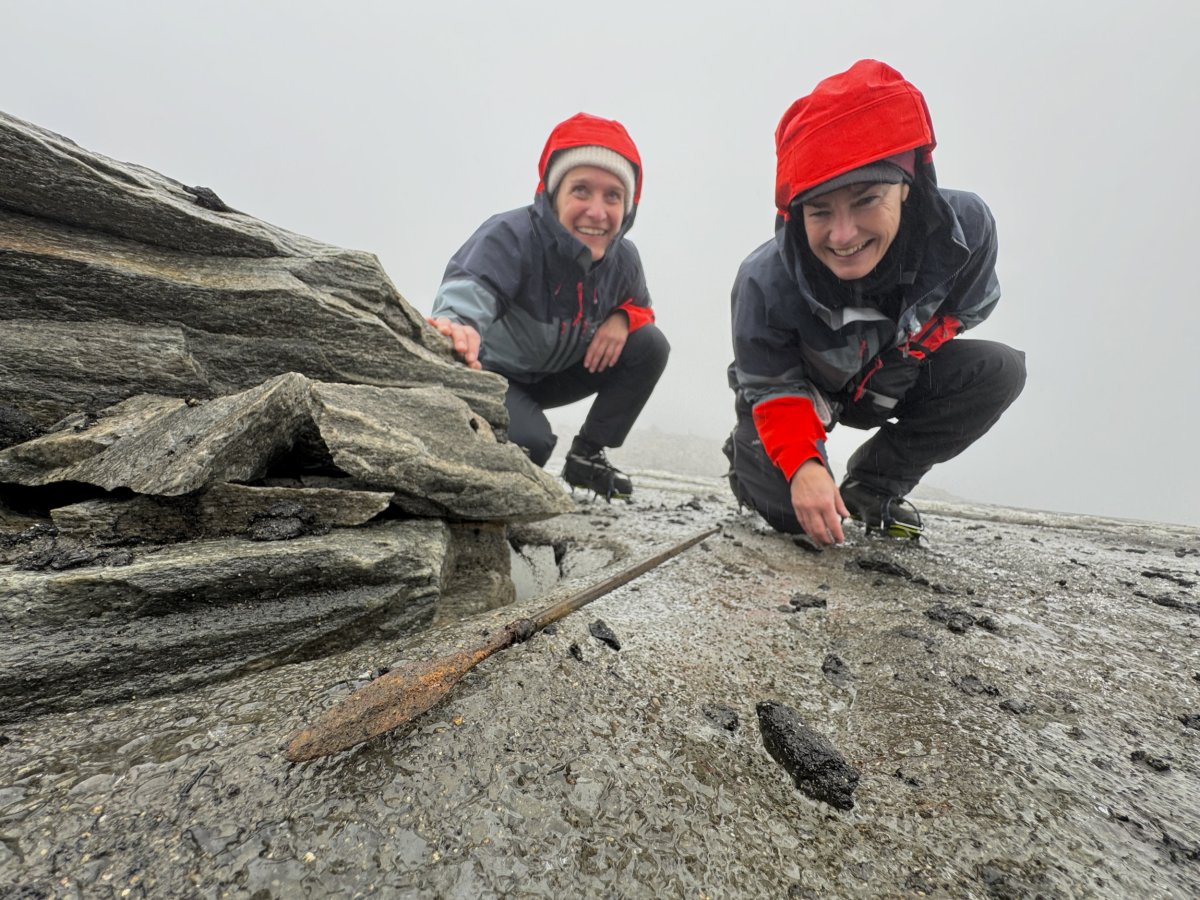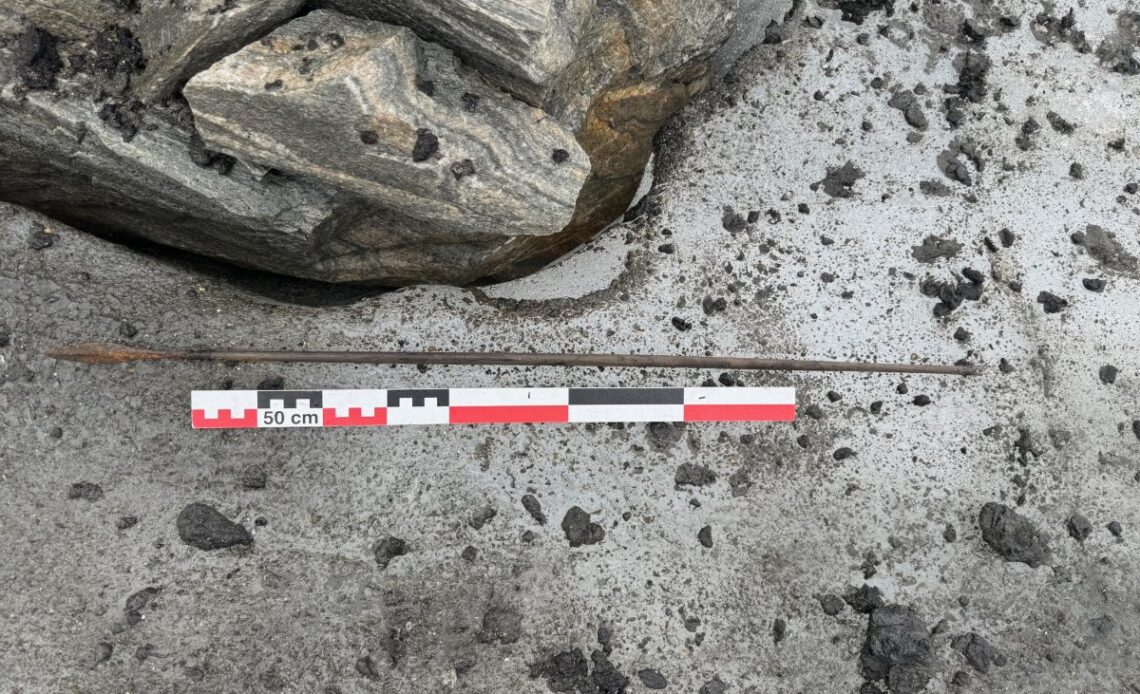A tool dating back around 1,300 years that’s believed to have been used for hunting was found on the surface of glacial ice in Norway on Wednesday.
The artifact was discovered on the Lendbreen ice patch in Innlandet county by a team of archaeologists from Secrets of the Ice, a program that specializes in the archaeology of glaciers and ice patches.
Glacial archaeologist Lars Holger Pilø, who is the co-director of Secrets of the Ice, told Newsweek: “Lendbreen is a ‘lost’ mountain pass site, which also contains remains from reindeer hunting, like the arrow.”
Images of the arrow were shared in viral posts on X, formerly Twitter, by Secret of the Ice as well as on Reddit by Pilø under the username ScaringStick. A couple of more images that Pilø shared with Newsweek provide additional views of the arrow.
Espen Finstad, Secretsoftheice.com
Pilø, who is also affiliated with the Innlandet County Council Department of Cultural Heritage, explained: “The arrow in question is incredibly well-preserved even for ice finds. It was found lying on the ice, which is normally a sign that the melt has reached layers previously untouched by melt. So, this arrow has probably not been out of the ice since it was lost 1,300 years ago. It is frozen in time in a literal sense.”
According to Pilø, the arrow can be dated by the shape of its iron arrowhead, which is a known type, found in graves from around A.D. 700, which is older than the Viking Age, a period spanning from A.D. 800 to A.D. 1050.

Espen Finstad, Secretsoftheice.com
“We have also found a few arrows with a similar arrowhead on a few occasions, which have come out with the same radiocarbon date. Though none were so well-preserved as the one from yesterday [Wednesday], which is in an exceptional condition,” he noted.
Pilø and his team have been rescuing finds from the ice…
Click Here to Read the Full Original Article at Newsweek…

